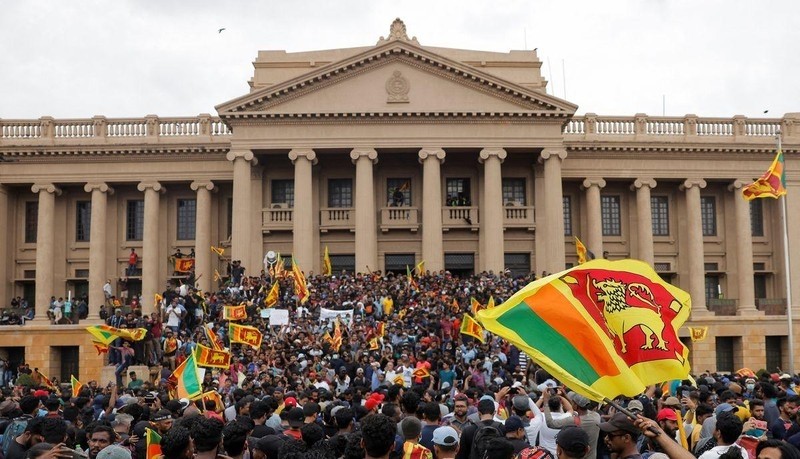Since the beginning of this year, many Sri Lankans have had to stop cooking with gas and instead switching to wood stoves, amid high gas prices and unavailability of supply. Some people have tried to switch to cooking with oil stoves, but the government does not have enough foreign currency reserves to pay the bills for importing oil. Families using electric stoves are also struggling to find alternatives while power outages persist on a large scale.
Cooking is just one of the many difficulties that millions of Sri Lankans are facing every day. According to analysts, Sri Lanka is now in its worst economic crisis since gaining independence in 1948. In April,the Sri Lankan government declared that it is unable to pay its foreign debt of 51 billion USD due to insufficient foreign currency reserves. After declaring “default”, the South Asian island nation had to enter a period of strict “austerity”, leading to a series of economic, political and social challenges.
Sri Lanka’s foreign currency reserves are so low that imports of fertiliser, food and medicine for its 22 million people can only create in a trickle in the long run. According to a survey released by the United Nations Children’s Fund (UNICEF), since May, about 70% of households in Sri Lanka have had to reduce their food rations. Many families rely on government rice subsidies and charity funds. With no fuel shipments arriving in the past fortnight, the Sri Lankan government has had to close schools and ask government employees to work from home to reduce commuting costs and save energy. Fuel is only to be used for essential emergency services such as medical care.
Economists say the current “snowball crisis” in Sri Lanka dates back many years, when the government took out huge loans to expand public services. While government loans increased, Sri Lanka’s economy continued to suffer negative impacts, from a decline in agricultural output due to extreme weather, socio-political instability, terrorism, and more. In addition, the COVID-19 pandemic has reduced the country’s important revenue from tourism and remittances.
On July 9, the Sri Lankan capital of Colombo was rocked by unprecedented large-scale protests. Thousands of people marched to Colombo, broke through the guardrails and stormed the Presidential Palace to express their discontent about the difficulties they faced in life. Both the President and Prime Minister of Sri Lanka announced that they would step down to ensure a peaceful transition of power.
The United Nations has launched emergency responses to the South Asian country’s unprecedented crisis, including providing food to thousands of pregnant women facing food shortages. According to the United Nations, up to four of every five Sri Lankan women have had to fast because they have no money to buy food. A “serious humanitarian crisis” has been warned for millions of Sri Lankans. At the request of the Government of Sri Lanka, the United Nations has implemented a plan to provide 47.2 million USD to the country to support about 1.7 million people who are most affected by the crisis.
Sri Lanka is stepping up dialogues with the International Monetary Fund (IMF) and seeking support from partner countries to overcome the increasingly serious crisis. To date, Sri Lanka has received 4 billion USD in financial support from India, the US, China, and Russia while several other countries have also offered to help. The sharing of the international community is a “lifesaver”, helping millions of Sri Lankans to overcome the current turbulent period.
















